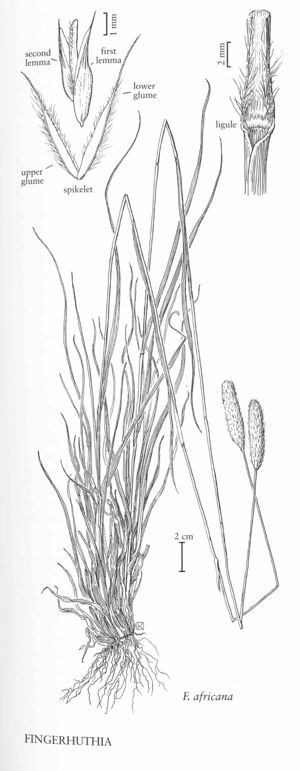| Taxon | Illustrator ⠉ | |
|---|---|---|
 | Fingerhuthia africana | Karen Klitz Linda A. Vorobik |
Plants usually perennial, occasionally annual in desert areas; cespitose and shortly rhizomatous. Culms 5-120 cm, unbranched. Leaves mostly basal; ligules of hairs; blades 2-5 mm wide. Inflorescences terminal, exceeding the upper leaves, dense, cylindrical to ovoid panicles, occasionally reduced to racemes; branches short, non-disarticulating; rachises concealed by the spikelets; disarticulation beneath the glumes. Spikelets laterally compressed, with 2-4 florets, only the basal florets bisexual, the next 2 florets usually staminate, the fourth floret, if present, sterile. Glumes subequal, clearly exceeding the florets, awned or unawned; lemmas firmly membranous, 3-veined basally, 5-7-veined distally, mucronate to shortly awned, awns shorter than 10 mm; anthers 3; ovaries glabrous, x = 10.
Discussion
Fingerhuthia is a genus of two species, one native to southern Africa and western Asia, the other endemic to southern Africa. One species has been grown in the Flora region.
Selected References
None.
Lower Taxa
"decumbent" is not a number.